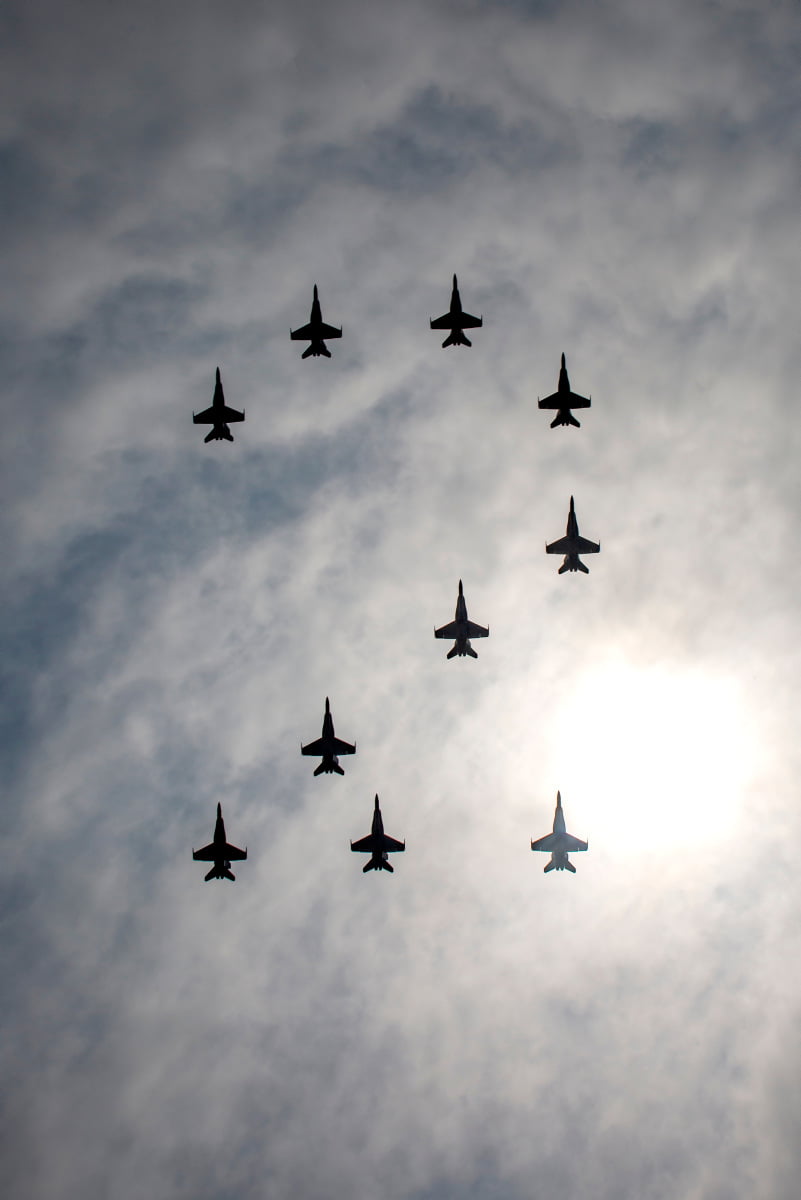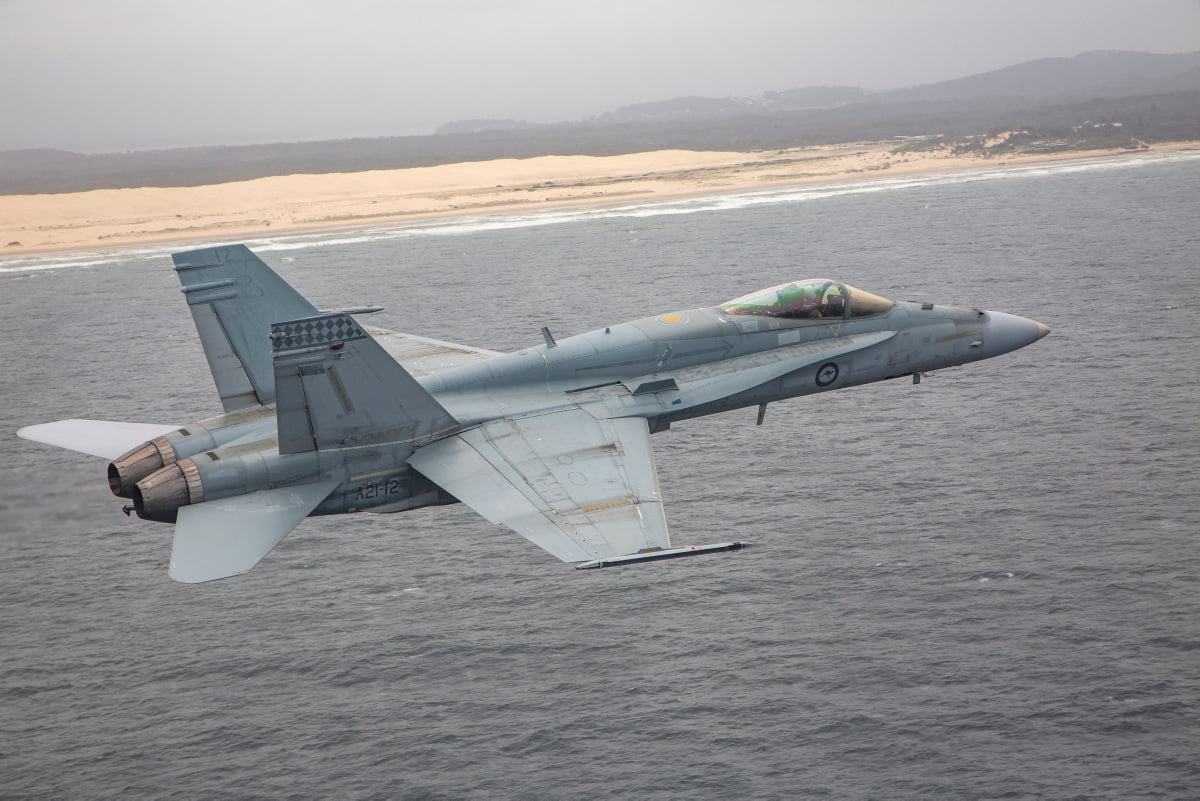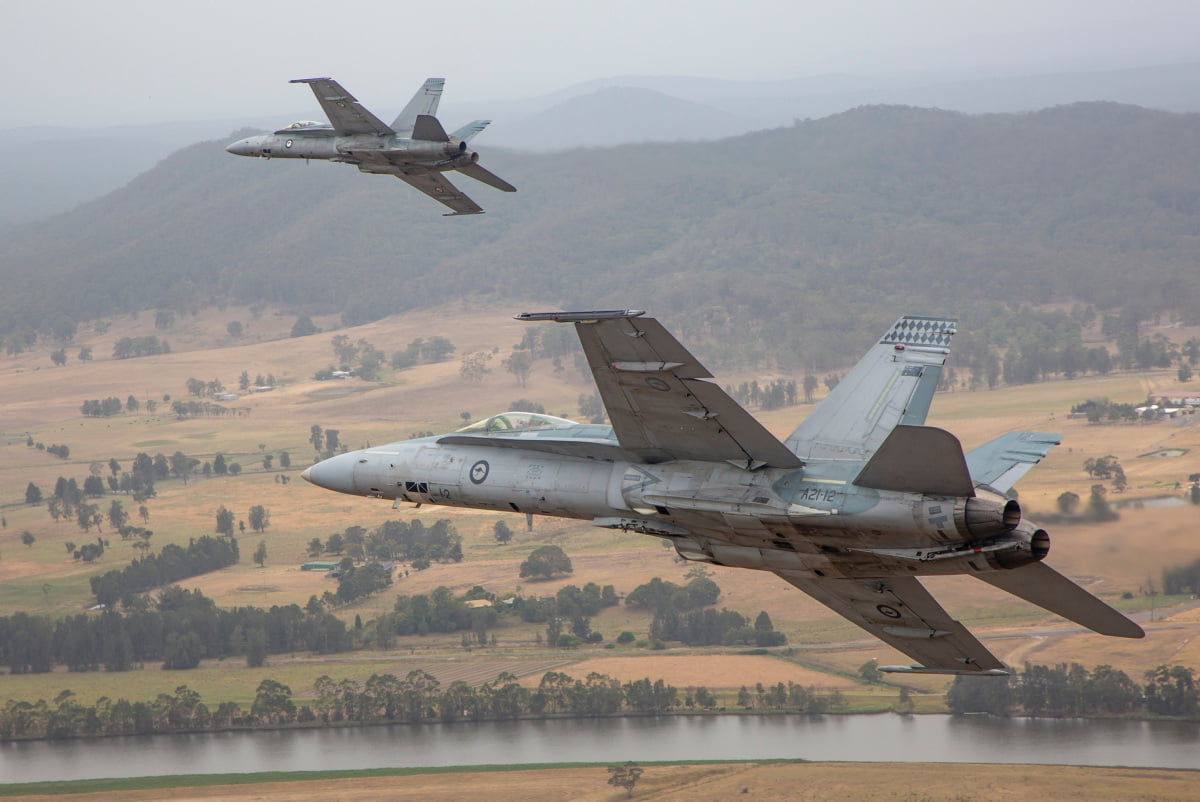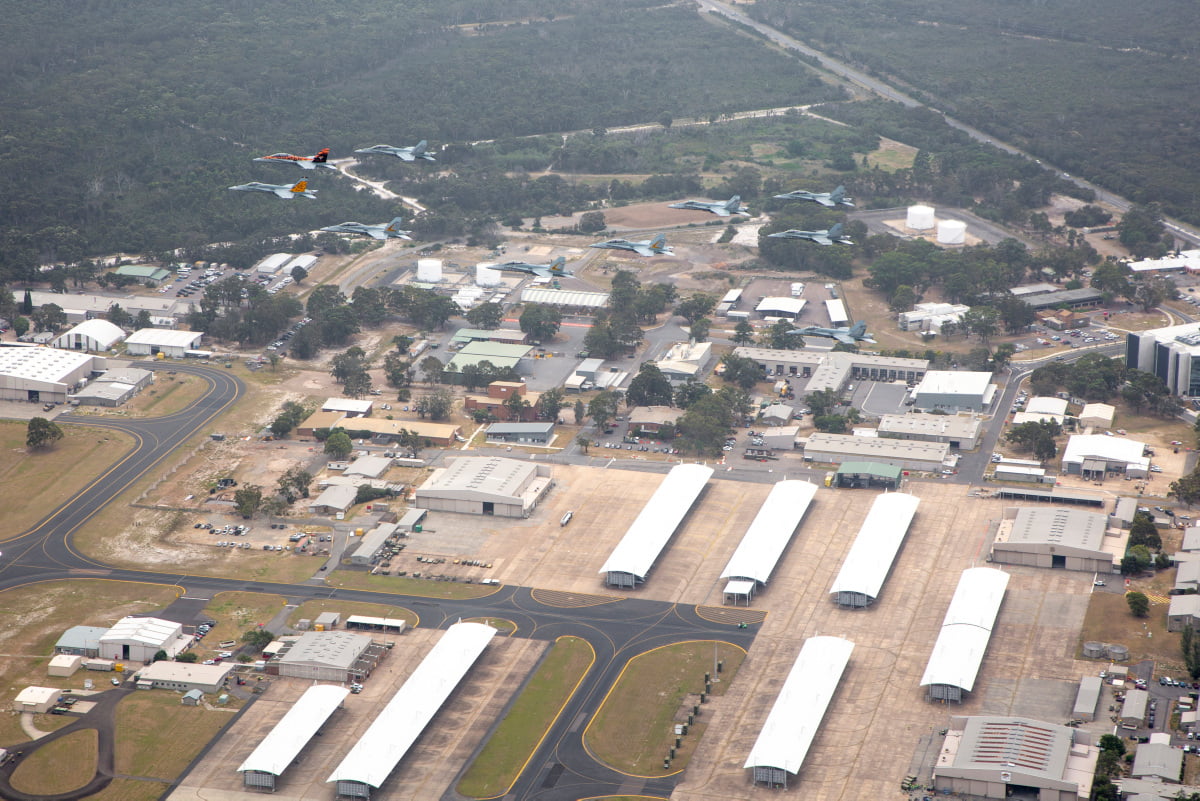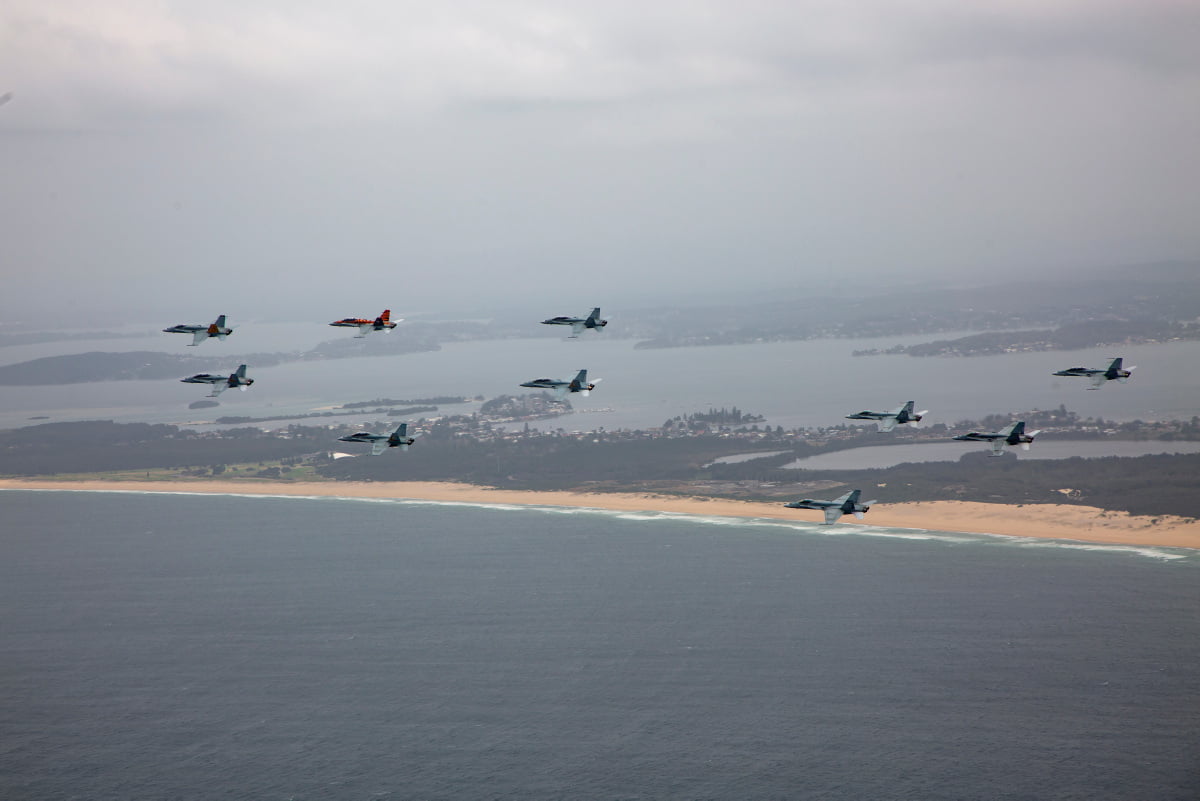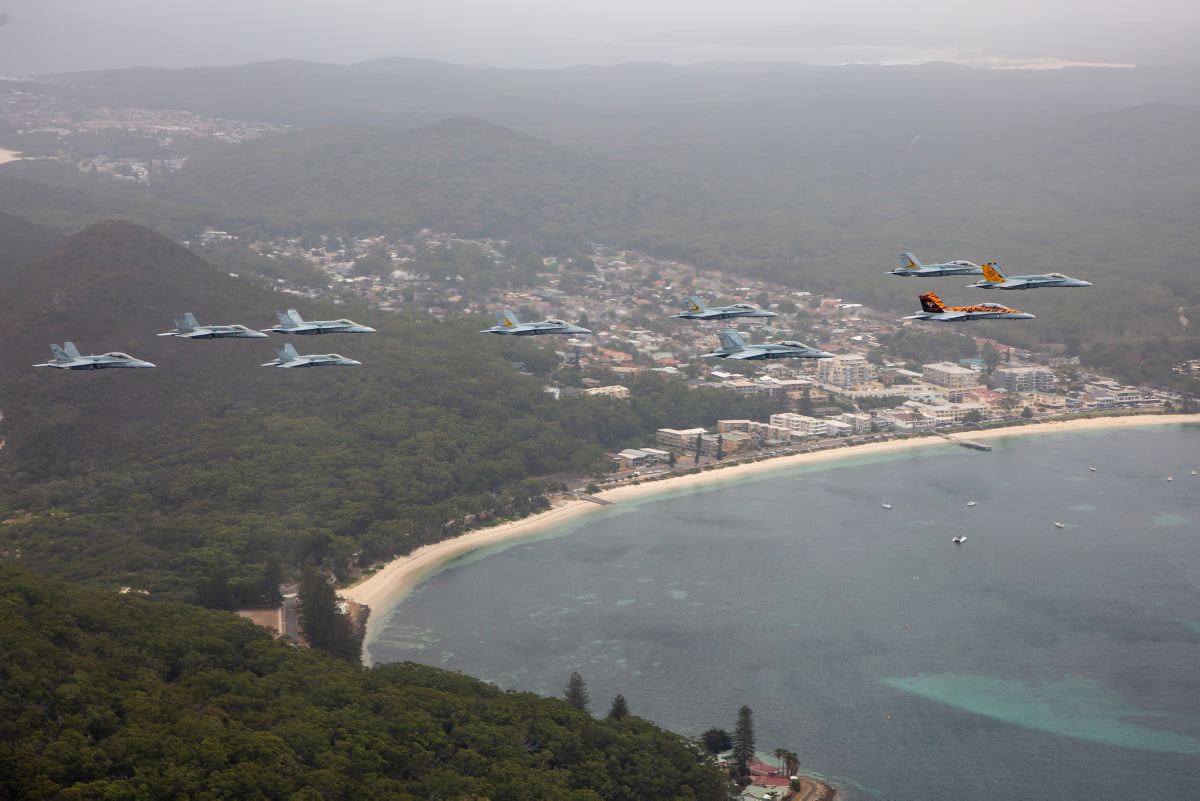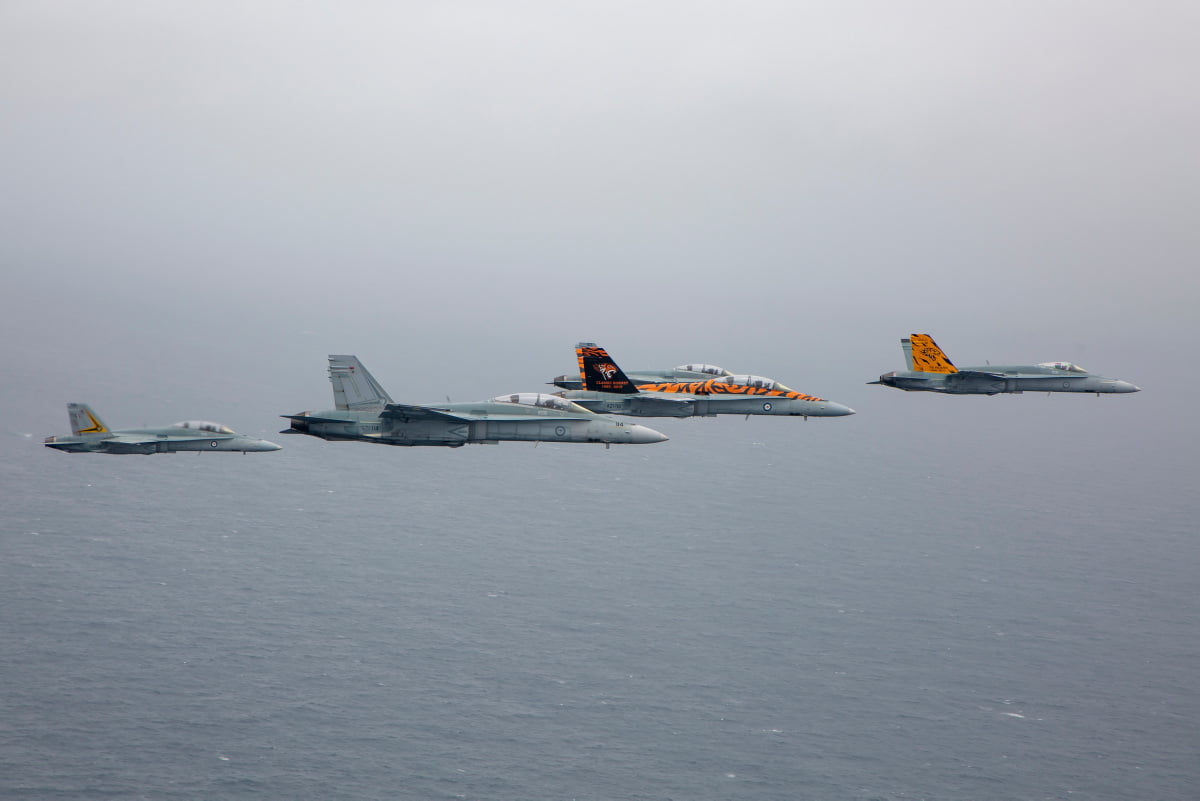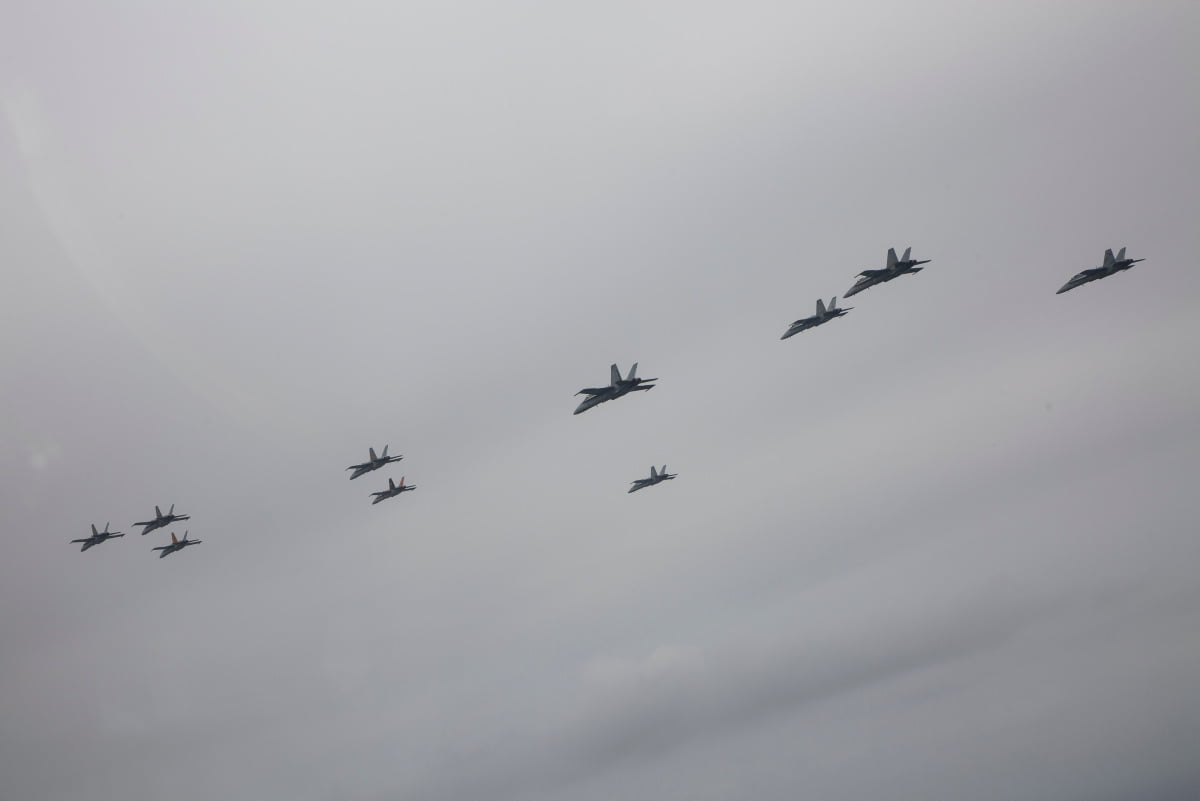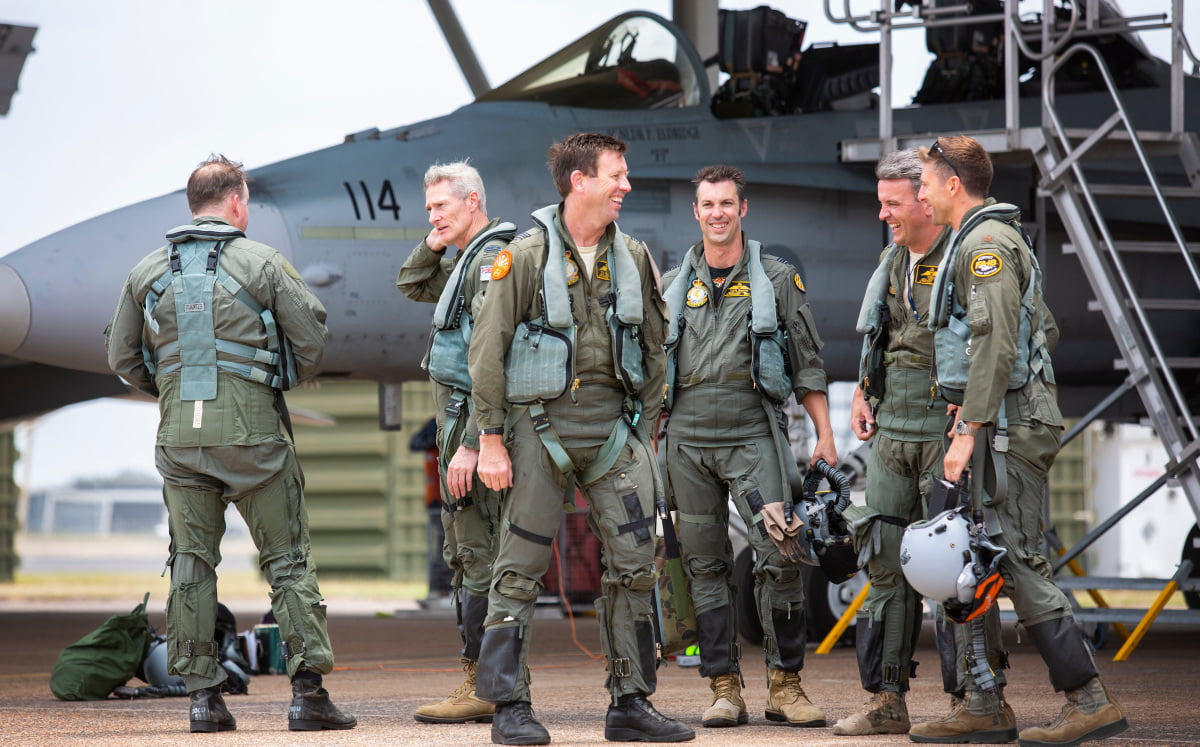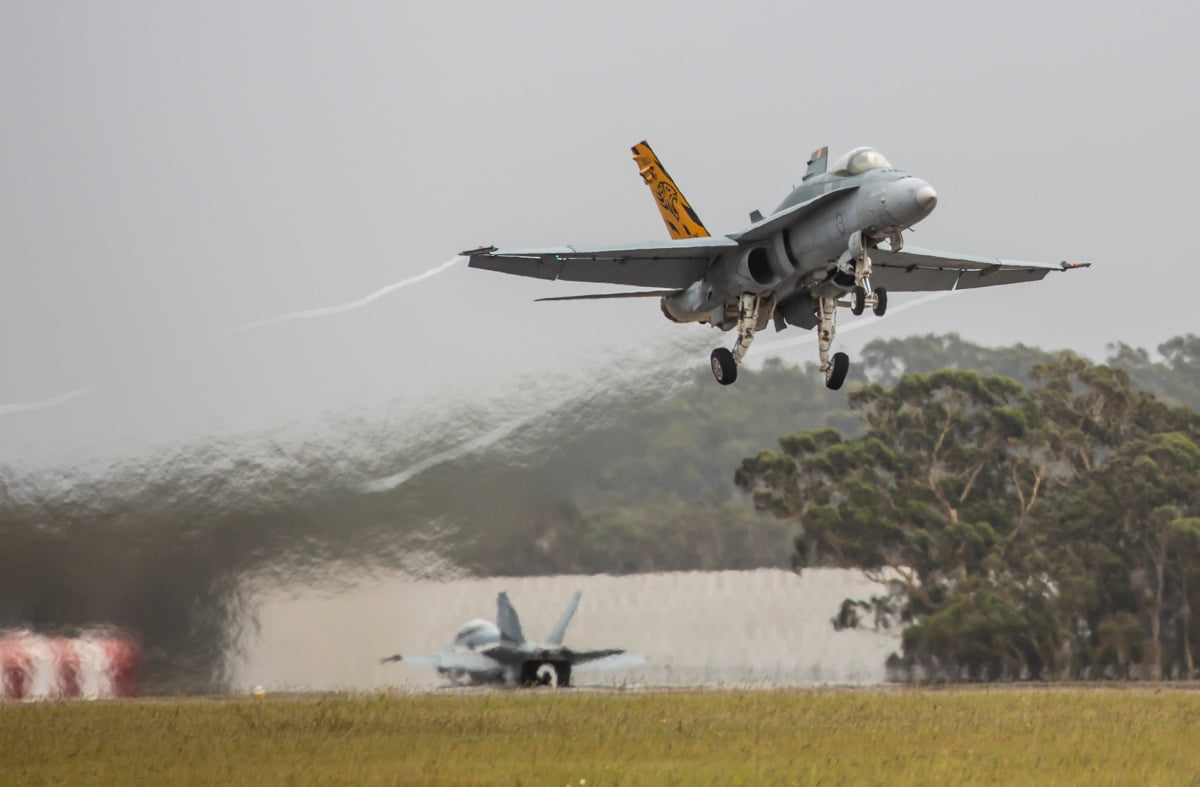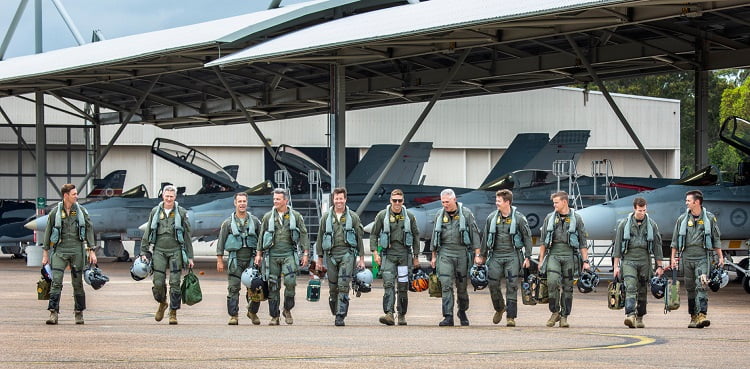On 11 Dec 19, Number 2 Operational Conversion Unit conducted its final F/A-18A/B Classic Hornet flight under the Unit’s banner.
The mission represented a key milestone in the phased-draw down of 2OCU Classic Hornet operations – which ceased in Dec 2019.
With this historic flight closing a significant chapter in Air Force history – the future of fast-jet aircrew training at 2OCU is firmly established with the training focus honed on supporting fifth generation capabilities with the arrival and operational sustainment of the F-35A.
The RAAF F/A-18A/B Classic Hornet platform is planned to be withdrawn from service in Dec 2021; and is currently being replaced by the F-35A Lighting II.
Australian Department of Defence
December 11, 2019
In an article published by ADBR on December 12, 2019, the transition was highlighted.
The RAAF’s No 2 Operational Conversion Unit (2OCU) completed 35 years of operations with the F/A-18A/B ‘classic’ Hornet on December 11.
Tasked with converting pilots to and upgrading pilot qualifications on the Hornet, 2OCU was the RAAF’s first Hornet unit and, until recently had trained every RAAF fighter pilot since 1986.
The squadron graduated its last group of Hornet pilots with the return of the graduating class from Exercise High Sierra to RAAF Williamtown on December 4, and flew its final Hornet flight as a 10-ship formation in the shape of a ‘2’ around the Newcastle and Port Stephens region on December 11.
Coincidentally, just two hours after 2OCU’s last Hornet sortie, a ferry flight of seven RAAF F-35As arrived from the US (a year and a day after the first RAAF F-35As arrived), including three aircraft wearing 2OCU livery.
The latest ferry was led by CO 3SQN WGCDR Darren Clare and CO 2OCU-designate WGCDR Jordan Sander, and comprised five aircraft that have been withdrawn from the multi-national F-35A ‘schoolhouse’ run by the USAF’s 61stFighter Squadron at Luke AFB in Arizona, and two freshly-delivered aircraft. Five RAAF F-35As are scheduled to remain at Luke until the end of 2020.
The seven aircraft flew to Williamtown from Luke via overnight stops at Hickam AFB in Hawai’i and Anderson AFB in Guam, and were supported by two RAAF KC-30A MRTTs.
The seven new aircraft add to the six F-35As already in service with 3SQN at Williamtown, giving almost a full squadron worth of aircraft to ramp up the all-important Australian-specific validation and verification of the jet’s capabilities, and the in-country pilot and engineering training effort.
“We welcome the commencement of the next phase of pilot conversion training for the F-35A,” WGCDR Woodland added. “This represents a fundamental shift for 2OCU; one which we are fully equipped and ready to continue to deliver a superior war-fighting capability – supported by highly professional, highly skilled aircrew – performing with strength and focus when called upon by government.”
The classic Hornet has about two years left in RAAF service, with Williamtown-based 77SQN scheduled to transition to the F-35A in late 2020, and Tindal’s 75SQN to follow the following year. Several classic Hornets have already been retired and parked-up at Williamtown, while at least three of a planned 25 jets have been transferred to Canada to bolster the RCAF’s CF-18 Hornet fleet until replaced in the late 2020s.


